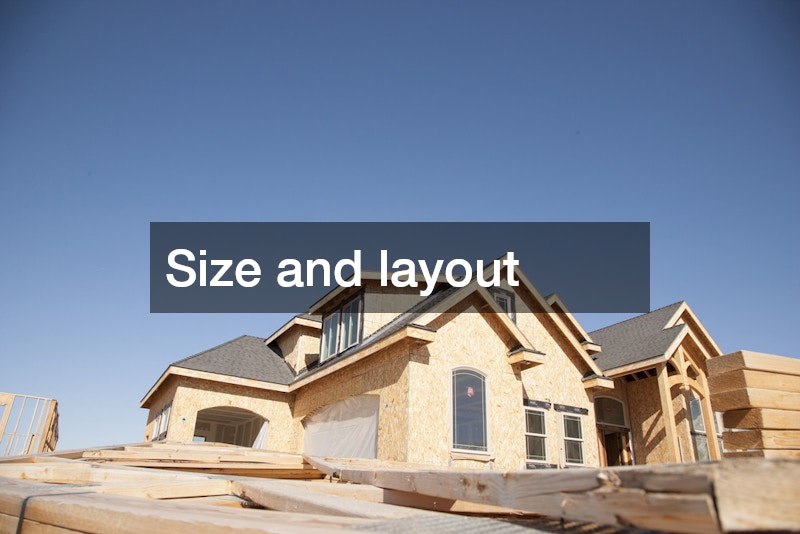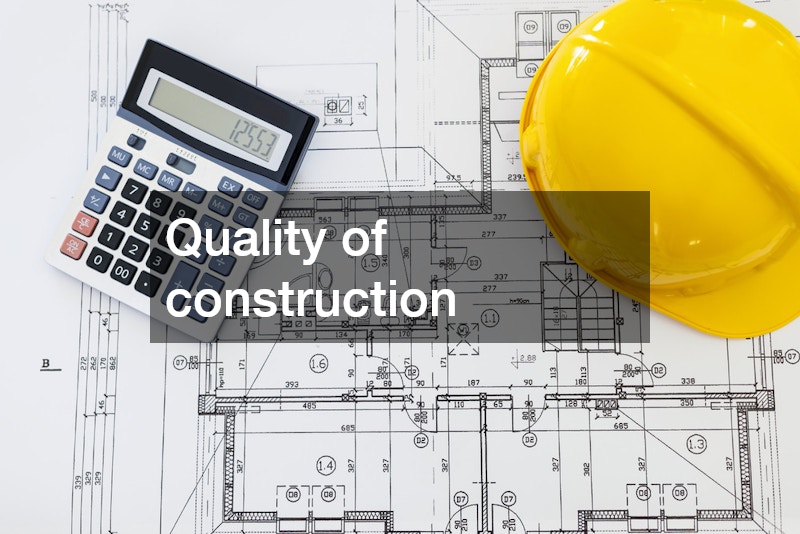The 2024 housing market is defined by a distinctive blend of innovation and tradition. While the property market may be booming, it’s features that truly turn a house into a home that matter most. Understanding these critical features can significantly influence the desirability and functionality of a home.
In today’s dynamic home market, making a house feel like a home requires a nuanced approach. Builders and renovators are focusing more on elements that enhance comfort and utility, reflecting shifting buyer preferences. The fusion of modern and traditional design with cutting-edge technology caters to the varied needs of today’s homeowners.
This guide delves into twelve essential features that transform houses into homes in the 2024 market. From location to emotional appeal, each aspect plays a vital role in creating a residential atmosphere that resonates with inhabitants and promises long-term satisfaction.
1. Location
Location remains a cornerstone in the home market, as it impacts accessibility, convenience, and lifestyle. Homes in desirable locations tend to have higher resale values and attract buyers who value community and connectivity. Proximity to schools, work, and amenities continues to drive demand in particular neighborhoods.
Moreover, a well-placed home can offer the added benefits of perceived safety and community vibrance. When selecting a location, factors such as local climate, crime rates, and the availability of essential services like HVAC Service and top-notch plumbers are highly regarded. Homeowners prioritize areas that strike a balance between seclusion and urban convenience.
The intrinsic value of location is further magnified by its potential for future growth and development. Savvy buyers consider properties in areas with strong economic growth and infrastructure investments, ensuring that their homes remain viable investments in the home market for years to come.

2. Size and layout
The size and layout of a house are intimately tied to its functionality and appeal in the home market. Buyers today seek homes that cater to their specific lifestyle needs, often prioritizing open floor plans for their versatility and space maximization. Homes that effectively use space tend to stand out in the competitive housing market.
Customizable layouts, such as those with walls that can be reconfigured, add an extra layer of appeal. This flexibility allows homeowners to adjust and optimize their living spaces according to changing life requirements. Whether accommodating growing families or adapting spaces for home offices, versatile layouts are highly prized.
Furthermore, a well-proportioned home enhances the feeling of comfort and ease. Thoughtful design that integrates natural light and unimpeded flow between spaces adds to the homey feel. A local structural engineer can play a crucial role in ensuring that these elements are seamlessly incorporated into the house design.
3. Design and style
The modern home market has evolved to embrace diverse design and style preferences that cater to a broad spectrum of buyers. Current trends lean toward minimalist aesthetics that emphasize clean lines and clutter-free environments. These stylistic choices often include neutral color palettes and eco-friendly materials.
Homes that feature innovative architectural designs are often seen as more attractive and inviting. The use of custom doors installation can provide a personalized touch, creating distinctiveness and enhancing aesthetic value. This attention to detail highlights the uniqueness of the property and attracts discerning buyers.
Moreover, incorporating timeless design elements ensures a home remains appealing well into the future. Mixing traditional styles with contemporary touches provides a sense of continuity and character. Aesthetic appeal is a key driver in the home market, influencing both buyer psychology and the property’s future resale value.

4. Modern amenities
As technology continues to advance, the importance of modern amenities in homes cannot be overstated. Today, features such as smart home technology, energy-efficient appliances, and integrated entertainment systems are increasingly in demand. These amenities not only add convenience but also contribute significantly to the home’s overall value.
A state-of-the-art ktichen remodel that includes cutting-edge appliances and smart features is especially attractive to modern buyers. The integration of technology facilitates a seamless lifestyle, allowing homeowners to control various aspects of their home environment with ease. Such features are becoming standard expectations in the home market.
Additionally, incorporating renewable energy solutions like solar installation improves a home’s sustainability and lowers utility costs. These eco-friendly upgrades are appealing to environmentally conscious buyers and position the property as a forward-thinking investment. Embracing such innovations enhances marketability in the changing home market.
5. Outdoor space
An inviting outdoor space serves as an extension of the home and provides opportunities for relaxation and entertainment. With more people valuing outdoor living, features such as patios, decks, and landscaped gardens have become increasingly significant in the home market. These spaces offer a retreat from everyday life and are seen as vital enhancements to a property.
Functional outdoor areas are not only visually appealing but also add utility. Features like built-in barbecues, fire pits, and pools can transform the backyard into a central hub for social gatherings. Moreover, a well-drained outdoor space, facilitated by local experts in well drill services, is key to maintaining its usability year-round.
Gardens designed with native plants not only require lower maintenance but also contribute to the ecosystem’s health. A focus on sustainable landscaping techniques is particularly attractive to buyers who value environmental stewardship. Such eco-conscious considerations are increasingly shaping the home market as preferences shift towards green living.
6. Community features
Community features significantly enhance the appeal and value of a home in the competitive home market. Proximity to recreational facilities, parks, and cultural amenities fosters a sense of belonging and adds lifestyle benefits. Homes situated in vibrant neighborhoods often attract buyers who appreciate a communal living experience.
Access to quality education and healthcare facilities is another critical factor that influences buyer decisions. Communities with robust infrastructure and amenities tend to offer a higher quality of life. Families, in particular, prioritize such features when choosing a home, contributing to demand in these areas.
Furthermore, active homeowner associations or neighborhood groups can foster a strong sense of community engagement. Social interactions facilitated through events and initiatives help build strong neighborhood bonds. Such community-driven environments are often sought after in the home market, as they enhance the overall living experience.

7. Quality of construction
The long-term value and durability of a home largely depend on its quality of construction. Buyers in the home market increasingly demand assurance of quality through solid construction practices. Well-built homes with sound mechanical systems and reliable materials stand out as prudent investments.
Engaging a renowned abm panel company ensures the use of superior materials and finishes. Such companies can offer high-quality panels and other construction elements that withstand the test of time. Quality assurance is a critical element for discerning buyers prioritizing sustainability and longevity.
Moreover, choosing reliable contractors and services such as fire protection sprinkler system installation or concrete polisher services can vastly improve a home’s safety and aesthetic appeal. Ensuring quality work and materials not only add to a property’s marketability but also provide peace of mind to homeowners.
8. Upgrades and renovations
In the constantly evolving home market, upgrades and renovations play a crucial role in maximizing a property’s appeal and value. Modernizing older homes through strategic improvements can attract more buyers by aligning the property with current design and functional trends.
Common upgrades include kitchen remodels, bathroom renovations, and converting underutilized spaces like basements or attics into functional areas. These changes can significantly enhance a home’s usability and aesthetic appeal, making them attractive to prospective buyers. A focus on quality workmanship ensures these upgrades will stand the test of time.
In-demand renovations often incorporate energy-efficient technologies, enhancing the property’s environmental profile and reducing operational costs. Solar installation and thorough HVAC Service updates ensure systems remain efficient and sustainable. These improvements are increasingly significant in the eco-conscious market attract buyers who value energy efficiency.

9. Resale value and market trends
The potential for a property to appreciate in value is a critical factor in the home market. Buyers are keenly aware of trends that may influence future valuations, making resale value an important consideration when purchasing a home. Homes with desirable features, such as updated amenities and quality construction, tend to perform well.
Monitoring market trends provides insights into which features are becoming increasingly valuable. Properties located in growing economies with planned infrastructure developments often see higher appreciation rates. It is vital to keep abreast of these trends to make informed decisions in the housing market.
Furthermore, properties that incorporate sustainable features and smart technology are particularly appealing to the modern buyer. As these elements become more mainstream, their influence on resale value is expected to grow. Staying ahead of these trends ensures that a home remains competitive and desirable in the evolving home market.
10. Emotional appeal
The emotional connection a homeowner has with their property is a powerful motivator in the selection process. Creating an atmosphere that evokes warmth, comfort, and security is paramount in transforming a house into a home. Personal touches and unique design choices can significantly enhance emotional connections.
Factors such as family history and sentimental value often contribute to a home’s personal significance. Homes that allow customization and personalization options give owners the freedom to mold their living spaces to reflect their identities, enhancing emotional attachment and satisfaction.
Homes that boast serene views or tranquil surroundings can also evoke emotional responses. Buyers may associate these elements with peacefulness and relaxation. The ability to create meaningful memories in a house is what ultimately transforms it into a home, driving decisions in the home market.
11. Safety Features
Safety features are a critical concern for homeowners, influencing both daily living and long-term market appeal. Modern homes prioritize safety through advanced systems and reliable infrastructure. Features like fire protection sprinkler system installation provide layers of protection against unforeseen events and are considered essential by safety-conscious buyers.
Security systems equipped with smart technology offer convenience and peace of mind by allowing remote monitoring and control. Such systems can deter potential intruders and provide a sense of safety, adding to the property’s attractiveness in the home market. Ensuring these systems remain updated is crucial for maintaining their efficacy.
The inclusion of structurally sound design, certified by a local structural engineer, adds an extra level of security. Homes that adhere to rigorous safety regulations and design standards are more appealing, as they ensure the well-being of residents and mitigate risks, further enhancing their value.
12. Modern Materials
The use of modern materials in construction and renovation plays a significant role in a home’s appeal and functionality. Materials such as engineered wood, composite panels, and advanced polymers provide strength, durability, and aesthetics. Homes that incorporate these materials are often seen as cutting-edge investments in the home market.
Eco-friendly materials continue to gain traction as sustainability becomes a priority. The utilization of reclaimed wood, recycled metals, and sustainable finishes speaks directly to environmentally conscious buyers. Such considerations are becoming decisive factors for a growing segment of home market buyers.
Working with innovative companies, like those offering concrete polisher services, ensures surfaces are not only visually appealing but also resilient and sustainable. The application of modern materials in design and construction adds considerable value to a property, aligning with contemporary preferences and expectations.
In conclusion, the transition from house to home in the 2024 housing market is facilitated by a range of factors that enhance comfort, functionality, and emotional connection. Features such as location, modern amenities, quality construction, and personalized design elements are becoming increasingly crucial.
The integration of new technologies and sustainable practices further elevates a home’s appeal in the competitive market. Buyers are drawn to properties that reflect current trends, offer future security, and provide a customizable living environment that suits their lifestyle.
Understanding these twelve pivotal features offers buyers, sellers, and investors insight into creating and maintaining homes that truly resonate in the modern market. By prioritizing these elements, properties are more likely to achieve favorable market outcomes, affirming their status as treasured homes.







